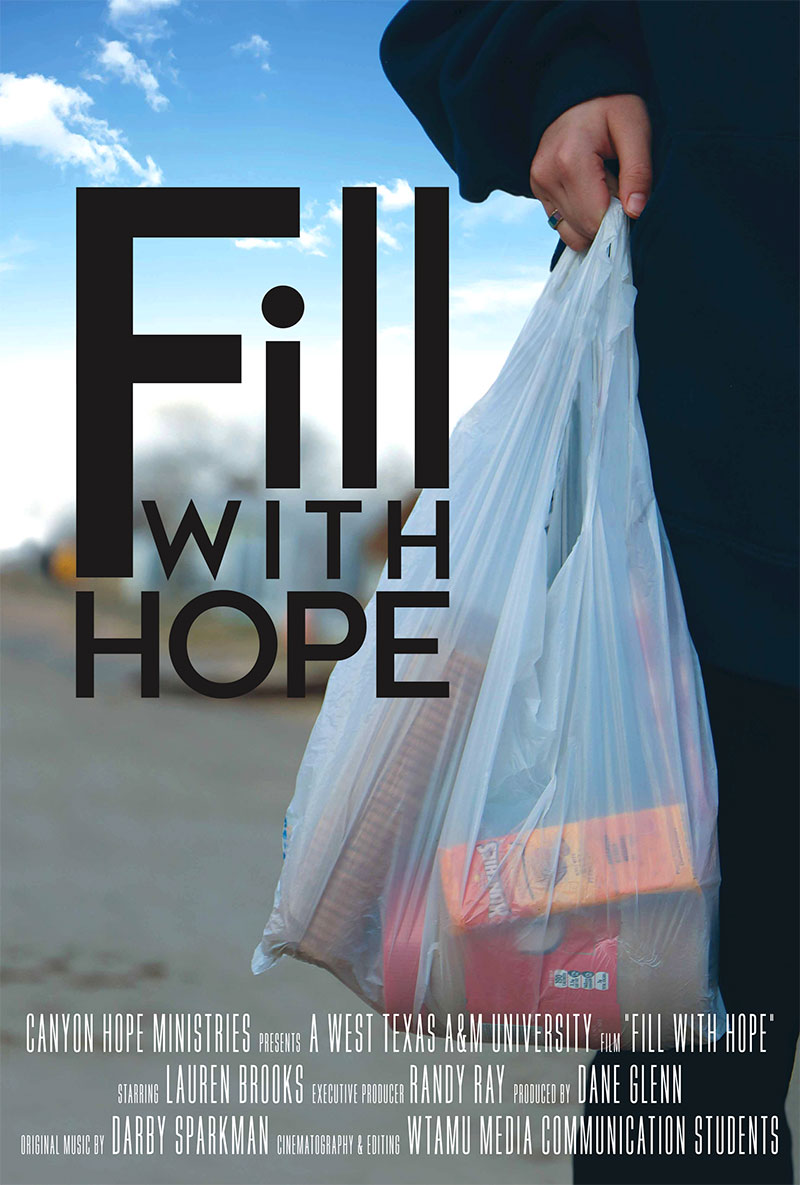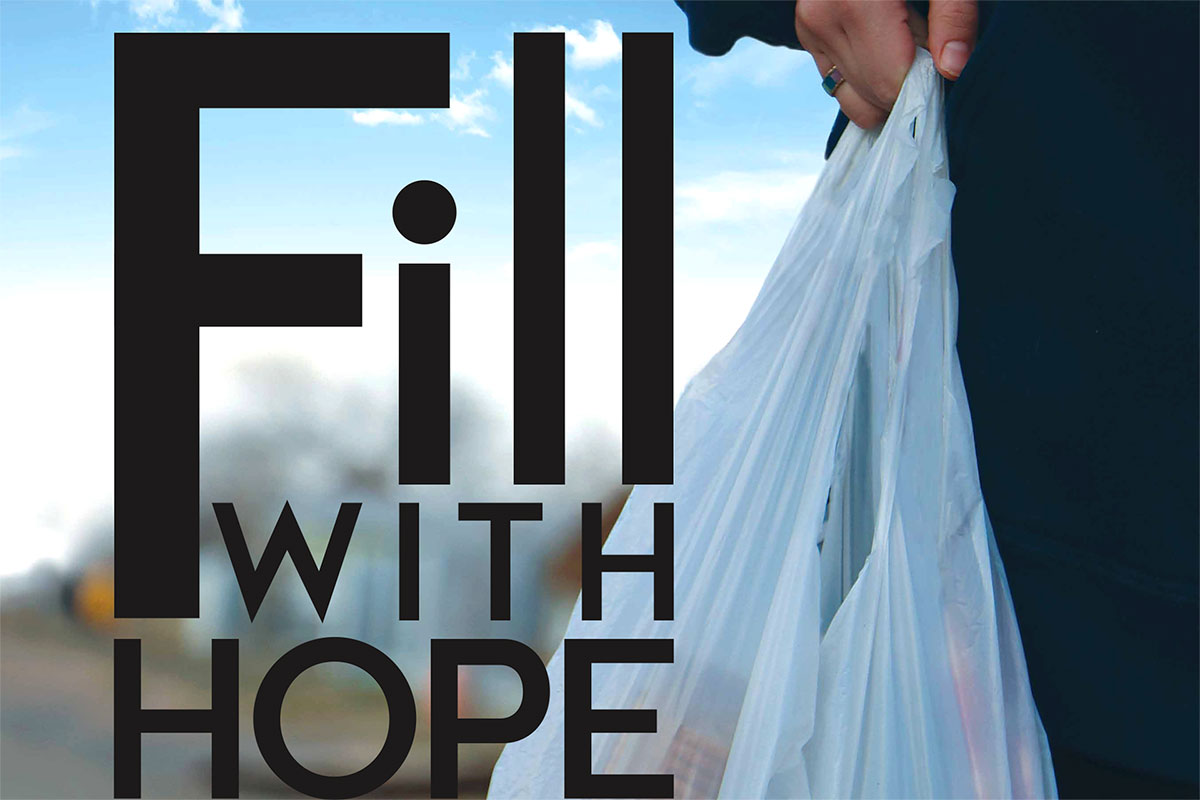- Featured
- Arts
- Community
- Jon Mark Beilue
Beilue: A story of hope in 15 minutes
WT class produces documentary on Fill With Hope mission
The camera follows a young girl as she slowly walks alone down an alley and then a sidewalk toward Reeves-Hinger Elementary School in Canyon. She’s faceless and nameless. Maybe she’s hungry. Maybe she’s struggling. It’s hard to tell. Maybe that’s the point. It’s supposed to be hard to tell.
“We think of Canyon as this little pristine community to live in,” Belen Guevara said, “but often we don’t see the poverty right under our noses.”

There’s a story to tell, or really a message to convey, about an ongoing serious issue facing students and their families in the Canyon ISD. Food insecurity is not a Canyon problem – it’s in every community in the country – but within this local sphere, an outreach is helping meet that need.
That’s the story. That’s what Randy Ray, West Texas A&M associate lecturer of media communication and director of broadcast engineering, wanted to tell. Better yet, that’s what he wanted his advanced video production class to tell in their semester project.
And tell it they did.
“I sat down the Jessica Mallard (dean of the College of Fine Arts and Humanities), who’s been supportive of all our documentaries, and asked her, of the three, which one was her favorite,” Ray said. “She said, ‘This one.’ When I asked her why, she said, ‘Because I feel like this one does the most good.’”
The 15-minute video is titled, appropriately enough, “Fill With Hope.” That is the name of the hunger outreach under Canyon Hope Ministries. The moving story is told through executive director Cindy Sheets and four volunteers, like Guevara, with effective use of b-roll, voice-overs and an ending original score and song by WT alumna Darby Sparkman of Quanah.
“A really talented young lady,” Ray said.
Ray has produced two other recent documentaries for the Amarillo Downtown Women’s Center and the nonprofit advocacy organization Texans for Israel, which had a crew of students in Israel. When looking for a third project, Ray didn’t have to look far nor did he go with the unfamiliar.
Anita Ray, Randy’s wife, is on the Fill With Hope board of directors. Students in WT’s department of communication have often volunteered to fill Hope-Totes, sacks of food that go to students each Friday during the school year.
“This whole process touched our hearts so much,” Sheets said. “There’s a very special need to reach our community to tell the story about Fill With Hope. Sometimes books do that, and in other ways, movies reach different people.
“When Randy came to us, we were just overwhelmed. We could not believe he was willing to invest so much time and energy in this project, but elated at the same time.
“This was an absolute gift. This was not something we requested, but something they wanted to give to us. It just pulled at our heart strings. Randy and his team just did a wonderful job.”
The project initially began early in the spring semester of 2020. It was about one-third complete when COVID-19 shut down the video and everything else. It was put on hold until this past spring and resumed again.
In all, close to 30 students and teachers worked for nearly the entire semester – “countless hours,” Ray said – to complete the documentary. Around Father’s Day, video editors and WT instructors Johnny Story and Dane Glenn helped finish the project that got complicated by COVID.
Freedom to tell a story
The bulk of the documentary – certainly the creative end – belonged to students. Ray just provided guidance.
“I assume the role of executive producer. I’m the big picture guy,” Ray said. “I’m going to pull everything together, do the scheduling and make sure the story is told in the right kind of way.
“The students serve as the production company. I give them a lot of free rein. When people are creative like the students I deal with, you have to give them some freedom. You have to let them fill in the blanks the way they want to and kind of guide them through.”
Fill With Hope operates much like Snack Pak 4 Kids, the Amarillo-based outreach that serves Amarillo, the Texas Panhandle and other pockets of the state. It was formerly known as Snack Pak 4 Kids Canyon, but changed its name in January to reflect no association with the Amarillo organization. The Canyon outreach began in 2011, and by 2013, provided weekend bags of food for 326 students in eight elementary schools.
Sheets was hired to grow the program. The Canyon ISD has approximately 10,000 students and 33 percent are on the free and reduced lunch list. Fill With Hope is now in 16 schools and serves 1,200 students with 13,000 food items monthly. Two more schools will be added in August, and two more in 2022 to reach 20 schools.
Hope-Totes are the weekend sacks of food that are discreetly provided in the lockers or backpacks of students each Friday during the school year. The bagging and distribution of the Hope-Totes, with their 10 food and drink items, takes much of each week with around 400 volunteers.
“The bags of food fill their tummies,” Guevara says in the documentary, “but it’s also validation. They’re important. They matter.”
It’s nuggets like that pulled from interviews that help tell a story that is more than statistics. It’s more than words and b-roll footage too. The tentative little girl walking into Reeves-Hinger at the beginning leaves the school at the end with a large smile on her very visible face.
Sheets was impressed enough with the video to delay a public showing until likely August and the beginning of school and roll it out with more fanfare.
“It’s powerful what hope can do when you give that to a child,” Sheets said, “and the film shows that.”
While Fill With Hope received what amounts to about a $15,000 video at no cost, it wasn’t the only group that benefitted. The outreach project is a valuable learning tool for Ray’s students.
“WT is a big believer in service learning and we especially believe that in the department of communications,” Ray said. “My colleagues and I try to incorporate as much service learning in the classroom as we can to give them real world experience.
“Sometimes we have to hold their feet to the fire to get it done, but I believe with all my heart this is the greatest experience they can get because this is what they will do when they graduate. Of all my classes, this is the most real world.”
Do you know of a student, faculty member, project, an alumnus or any other story idea for “WT: The Heart and Soul of the Texas Panhandle?” If so, email Jon Mark Beilue at jbeilue@wtamu.edu.

